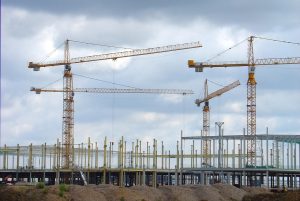In the last two decades, the construction industry has undergone a profound digital transformation. Once known as one of the least digitized sectors, construction is now rapidly evolving, embracing a new era driven by digital construction technology. From Building Information Modeling (BIM) and drones to artificial intelligence (AI) and robotics, these technologies are revolutionizing how buildings are designed, managed, and delivered.
This evolution is not merely about replacing blueprints with tablets or switching from manual site logs to software; it’s about redefining how the built environment is conceived, constructed, and maintained. Digital construction technology integrates design, data, and delivery into one ecosystem—enhancing collaboration, reducing waste, improving safety, and unlocking efficiency at every stage of a project’s lifecycle.
In this in-depth guide, we will explore how digital construction technology is transforming modern building projects, diving into its core tools, benefits, challenges, and the future of this powerful revolution.
Understanding Digital Construction Technology

Digital construction technology refers to the use of digital tools, software, and systems to plan, design, construct, and operate buildings and infrastructure more efficiently and accurately. It is a broad term that encompasses technologies such as:
- Building Information Modeling (BIM)
- Digital Twins
- Drones and UAVs
- Artificial Intelligence (AI) and Machine Learning (ML)
- Augmented Reality (AR) and Virtual Reality (VR)
- 3D Printing and Robotics
- Internet of Things (IoT)
- Cloud-based project management platforms
Each of these tools enables greater control over time, cost, quality, and safety—factors that have traditionally challenged construction projects worldwide.
At its core, digital construction is about data. It transforms physical assets into digital ecosystems, creating a seamless flow of information across the entire construction value chain—from the architect’s first sketch to long-term facility maintenance.
Also read: 10 Best Bali Architecture Styles That Define the Island’s Unique Charm
The Shift from Traditional to Digital Construction
Traditionally, construction was fragmented and heavily paper-based. Design teams, contractors, engineers, and suppliers worked in silos, often using disconnected systems. This led to miscommunication, design conflicts, cost overruns, and delays.
Digital construction technology breaks down these silos by creating a connected data environment. Designs are created in 3D digital models, linked to real-time data, and shared across all stakeholders. Changes can be visualized instantly, risks can be anticipated before construction begins, and progress can be tracked with precision.
This shift marks a transition from reactive management to proactive decision-making. Problems are identified before they occur, and solutions are simulated digitally before being applied in the real world.

Core Technologies Driving Digital Construction
Let’s explore the key technologies that are reshaping the construction landscape.
1. Building Information Modeling (BIM)
BIM is at the heart of digital construction. It’s not just 3D modeling—it’s a data-rich, intelligent process that integrates geometry, specifications, and performance information into one centralized digital representation of a building.
Each component in a BIM model contains detailed data, such as materials, costs, lifecycle, and maintenance requirements. This allows for collaborative planning and clash detection before construction begins, drastically reducing errors and rework.
BIM also supports 4D (time), 5D (cost), and even 6D (sustainability) modeling, enabling teams to simulate construction schedules, budgets, and environmental performance simultaneously.
In essence, BIM provides a single source of truth for all stakeholders—architects, engineers, contractors, and owners—ensuring alignment from design through operation.
2. Digital Twins
A digital twin is a virtual replica of a physical asset that continuously receives data from sensors, IoT devices, and operational systems. It enables real-time monitoring, predictive maintenance, and performance optimization.
In construction, digital twins bridge the gap between design intent and actual performance. Once a building is complete, its twin continues to track energy consumption, occupancy, and maintenance needs, ensuring long-term efficiency and sustainability.
For example, in smart cities, digital twins are used to simulate how new developments impact traffic, energy grids, and public safety—allowing for data-driven urban planning.
3. Drones and Unmanned Aerial Vehicles (UAVs)
Drones are now common sights on construction sites. Equipped with high-resolution cameras and LiDAR sensors, they provide aerial surveys, progress monitoring, and volumetric measurements in minutes, tasks that once took days of manual work.
Their ability to capture real-time data enhances safety and accuracy. Drones can:
- Map large or hazardous areas quickly,
- Generate 3D site models for analysis,
- Track progress against project schedules, and
- Detect deviations between design and actual conditions.
This aerial perspective improves decision-making and enables more precise project management.
4. Artificial Intelligence and Machine Learning
AI and ML are transforming how projects are planned and executed. These technologies analyze massive amounts of construction data—drawings, schedules, costs, and site images—to predict risks, optimize logistics, and improve outcomes.
Some key applications include:
- Predictive analytics: Anticipating schedule delays or budget overruns before they occur.
- Image recognition: Identifying safety hazards or quality issues from site photos.
- Automated scheduling: Using machine learning to create optimal sequencing of construction tasks.
AI not only enhances productivity but also reduces human error, making projects more efficient and safer.
5. Augmented Reality (AR) and Virtual Reality (VR)
AR and VR are revolutionizing design visualization and training.
- Virtual Reality allows clients and designers to “walk through” a building before it’s constructed, making design reviews more intuitive.
- Augmented Reality overlays digital information on real-world environments, enabling workers to visualize where systems should be installed or identify potential clashes on-site.
For training and safety, VR simulations provide realistic, risk-free environments for workers to practice complex tasks.
6. Robotics and Automation
Robotics are increasingly used in construction for repetitive, high-precision, or hazardous tasks. Examples include:
- Bricklaying robots that can lay thousands of bricks per day.
- Rebar-tying robots that speed up reinforcement work.
- Autonomous vehicles for material transport within large sites.
Automation not only enhances productivity but also helps address the global labor shortage in construction.
7. 3D Printing (Additive Manufacturing)
3D printing is revolutionizing how structures are fabricated. Using concrete, polymers, or composites, 3D printers can construct entire walls or even houses layer by layer, directly from digital models.
This technology reduces material waste, shortens build times, and allows for complex geometries that would be difficult or costly using traditional methods.
8. Internet of Things (IoT)
IoT connects tools, equipment, and systems through smart sensors. On construction sites, IoT devices monitor:
- Worker safety (e.g., wearable sensors tracking heart rate or proximity to hazards),
- Equipment performance (predictive maintenance alerts),
- Environmental conditions (temperature, noise, humidity).
By feeding data into centralized platforms, IoT enables real-time insights that improve safety, resource management, and efficiency.
9. Cloud-Based Collaboration and Data Management
Modern construction involves vast data volumes from multiple disciplines. Cloud-based platforms like Autodesk Construction Cloud, Procore, and Trimble Connect centralize this information, ensuring that every stakeholder accesses the latest version of documents and models.
Cloud systems eliminate version conflicts, enable remote collaboration, and provide digital audit trails—an essential foundation for today’s global, fast-paced projects.
Benefits of Digital Construction Technology
Digital transformation brings enormous advantages to the entire construction ecosystem.
1. Improved Collaboration and Communication
Digital platforms allow architects, engineers, contractors, and owners to work from the same data environment. Updates made by one party instantly reflect across all systems, reducing confusion and miscommunication.
2. Enhanced Efficiency and Productivity
Automation, AI, and real-time monitoring minimize delays, rework, and waste. For instance, BIM clash detection identifies design conflicts before construction, saving weeks of field corrections.
3. Better Cost and Time Management
Data-driven insights allow accurate forecasting, resource allocation, and scheduling. Real-time monitoring tools detect deviations early, helping managers make proactive decisions to stay within budget.
4. Higher Quality and Precision
Digital tools ensure every aspect of construction meets design specifications. Prefabrication and robotic construction improve precision and reduce human error.
5. Safer Work Environments
Drones, wearables, and AI-based monitoring systems identify potential hazards and improve site safety compliance. AR training simulations prepare workers for real-world scenarios without risks.
6. Sustainability and Waste Reduction
Digital tools optimize material use, reduce waste, and enable performance-based design. BIM models can simulate energy performance, daylighting, and thermal comfort—guiding sustainable decision-making from the start.
7. Lifecycle Asset Management
Digital twins and IoT ensure that data collected during design and construction continues to deliver value during building operations, enabling efficient maintenance and long-term asset management.
Challenges of Implementing Digital Construction
Despite its transformative potential, digital adoption in construction faces several challenges:
a. High Initial Investment
Implementing digital systems requires significant capital for hardware, software, and training. Smaller firms may struggle to justify the cost without clear ROI metrics.
b. Skills Gap
Digital technologies demand new skills—from data analytics to BIM management. Upskilling the workforce and attracting tech-savvy talent are ongoing challenges.
c. Data Security and Privacy
As more project data moves to the cloud, cybersecurity becomes critical. Protecting sensitive financial, design, and operational data requires strong IT governance.
d. Interoperability Issues
Different software platforms may not integrate smoothly, leading to data silos. Industry-wide standardization (e.g., IFC formats) is still evolving.
e. Cultural Resistance
Construction is traditionally conservative. Adopting digital tools requires a cultural shift toward innovation, continuous learning, and data-driven decision-making.
Case Study Examples of Digital Construction Impact
Case 1: High-Rise Development with BIM Integration
In large-scale urban projects, BIM enables coordination among structural, architectural, and MEP teams. Early clash detection prevented costly on-site rework, saving millions and accelerating delivery by 10–15%.
Case 2: Infrastructure Project Using Drones and IoT
A major highway expansion project used drones for topographical mapping and IoT sensors for monitoring equipment. The data improved scheduling accuracy and reduced surveying time by 60%.
Case 3: Prefabrication and Robotics in Modular Construction
Modular construction factories use robotics to fabricate building components under controlled conditions. Digital models guide assembly, leading to higher quality and reduced waste.
These examples highlight how digital tools are not theoretical—they are already reshaping real-world construction outcomes.
The Future of Digital Construction
The next decade will see an even deeper convergence between digital technologies, automation, and sustainability. Key future trends include:
1. Artificial Intelligence Integration
AI will become central to decision-making, automating design optimization, predicting maintenance needs, and continuously learning from project data.
2. Fully Autonomous Construction Sites
Robotic equipment and autonomous vehicles will handle repetitive tasks, allowing human workers to focus on complex and creative aspects.
3. Blockchain for Transparency
Blockchain technology could revolutionize contract management, payments, and material traceability—ensuring transparency and trust across the supply chain.
4. Advanced Digital Twins
Digital twins will evolve into intelligent systems that autonomously manage building performance, adjusting systems for energy efficiency and occupant comfort.
5. Integration with Smart Cities
As cities become more connected, digital construction technologies will link individual buildings with wider infrastructure systems—transport, energy, and water networks—enabling holistic urban management.
Also read: What Is an Eco-Friendly Building? A Complete Guide to Sustainable Architecture
Building a Digital Construction Strategy
For companies looking to embrace digital transformation, success depends on a clear, phased approach:
- Assessment: Evaluate current workflows, data management practices, and digital maturity.
- Investment: Prioritize high-impact technologies that align with project needs (e.g., BIM or IoT).
- Training: Upskill staff in digital tools, data literacy, and collaborative workflows.
- Integration: Ensure all software platforms communicate effectively through standardized formats.
- Continuous Improvement: Gather feedback, measure outcomes, and adapt strategies as technologies evolve.
Conclusion
The power of digital construction technology lies not just in its tools, but in its ability to transform how the industry thinks and operates. It replaces fragmentation with integration, guesswork with data, and inefficiency with precision.
From design visualization to long-term facility management, digital technologies create a continuous thread of information that connects every phase of the construction lifecycle. Projects become faster, safer, more sustainable, and more cost-effective.In an era where urban populations are growing and sustainability is no longer optional, digital construction is the new foundation of progress. It’s not a luxury—it’s the blueprint for the future of building.

Indah Suzanne
Indah Suzanne is a key player in Indonesia's design and architecture scene, leading Karyanusa Asia from Bali. As the driving force behind Karyanusa Asia in Bali, she combines innovative design concepts with exceptional construction expertise, delivering world-class villas, commercial spaces, and bespoke architectural projects that reflect both modern elegance and the island’s rich cultural heritage.





